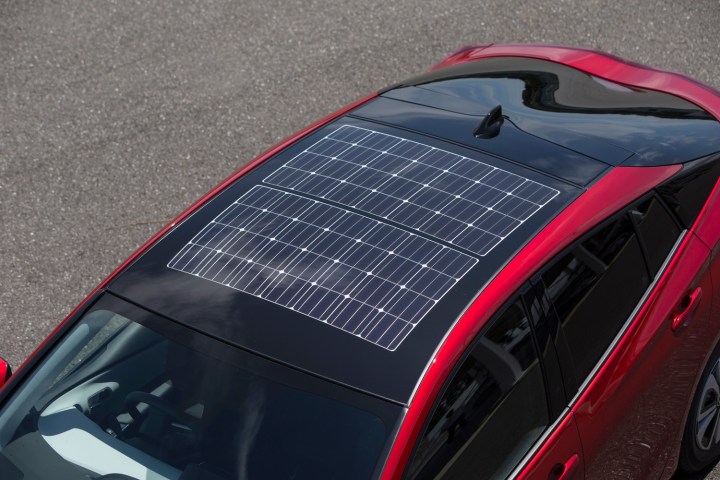
Panasonic has developed a full-length solar roof for the Japanese version of the Toyota Prius Prime plug-in hybrid. While solar roofs have been tried on production cars before, Panasonic claims this new version can generate more power than before, and is easier to fit to a car’s curved roof. But will that be enough to take solar roofs mainstream?
Since a car’s roof is (relatively) flat and almost constantly exposed to sunlight, the theory goes that covering it in solar cells will allow for the harvesting of electricity. Toyota actually tried this on the old Prius Plug-In Hybrid, using solar power for accessories. Panasonic claims the new Prius Prime solar roof can provide enough power to not only run accessories, but also help charge the car’s lithium-ion battery pack.
Toyota claims the solar roof can add up to 3.7 miles of electric-driving range per day while parked, and can continue to feed electricity to the battery pack while the car is in motion. Panasonic also claims the new solar roof more precisely follows the curves of the Prius Prime roof, thanks to a new laminating process for the glass that allows it to attain a three-dimensional shape.
The Prius Prime solar roof is only available in Japan at the moment, and it’s unclear whether Toyota will bring it to the U.S. Panasonic is also the sole battery supplier to Tesla, and a partner in the automaker’s massive “Gigafactory” in Nevada. That’s led to speculation that Panasonic could adapt its solar-roof design to a future Tesla electric car, although neither company has discussed any concrete plans for that.
Looking beyond Tesla and Toyota, Karma Automotive will offer a solar roof on the Revero, the luxury car formerly known as the Fisker Karma. But while solar roofs may seem like a neat idea, it’s worth noting that their added weight and cost may not be worth the relatively small amount of electricity they are able to generate in real-world use.
Editors' Recommendations
- 2021 Toyota Prius vs. 2021 Toyota Prius Prime
- Toyota covers a Prius in solar cells to boost its range by 27 miles


